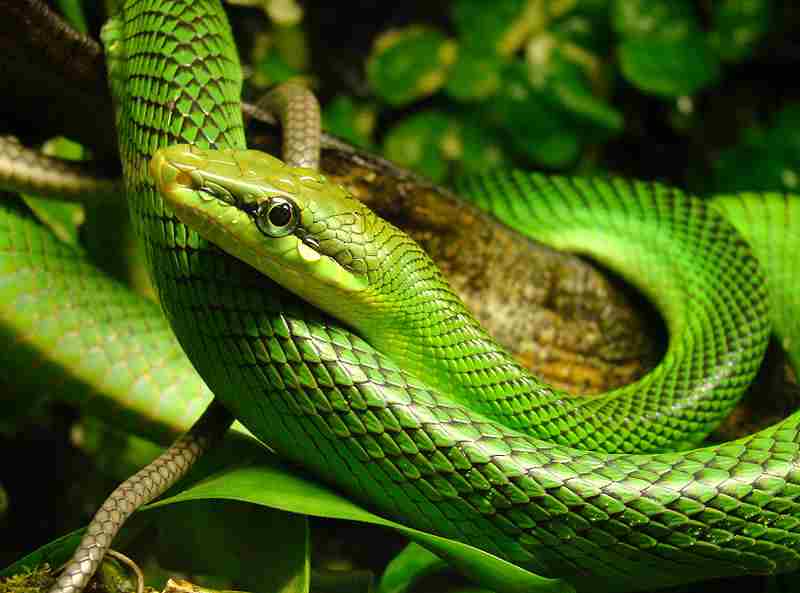Python Snake Facts, Description, Characteristics
Pythons are diverse reptiles with adaptations for predation, reflected in their taxonomy, behavior, and physical traits. Their ecological role as predators influences prey populations and ecosystem dynamics. Conservation efforts are crucial to protect python populations from threats like habitat loss and the exotic pet trade, promoting responsible stewardship of these fascinating creatures.
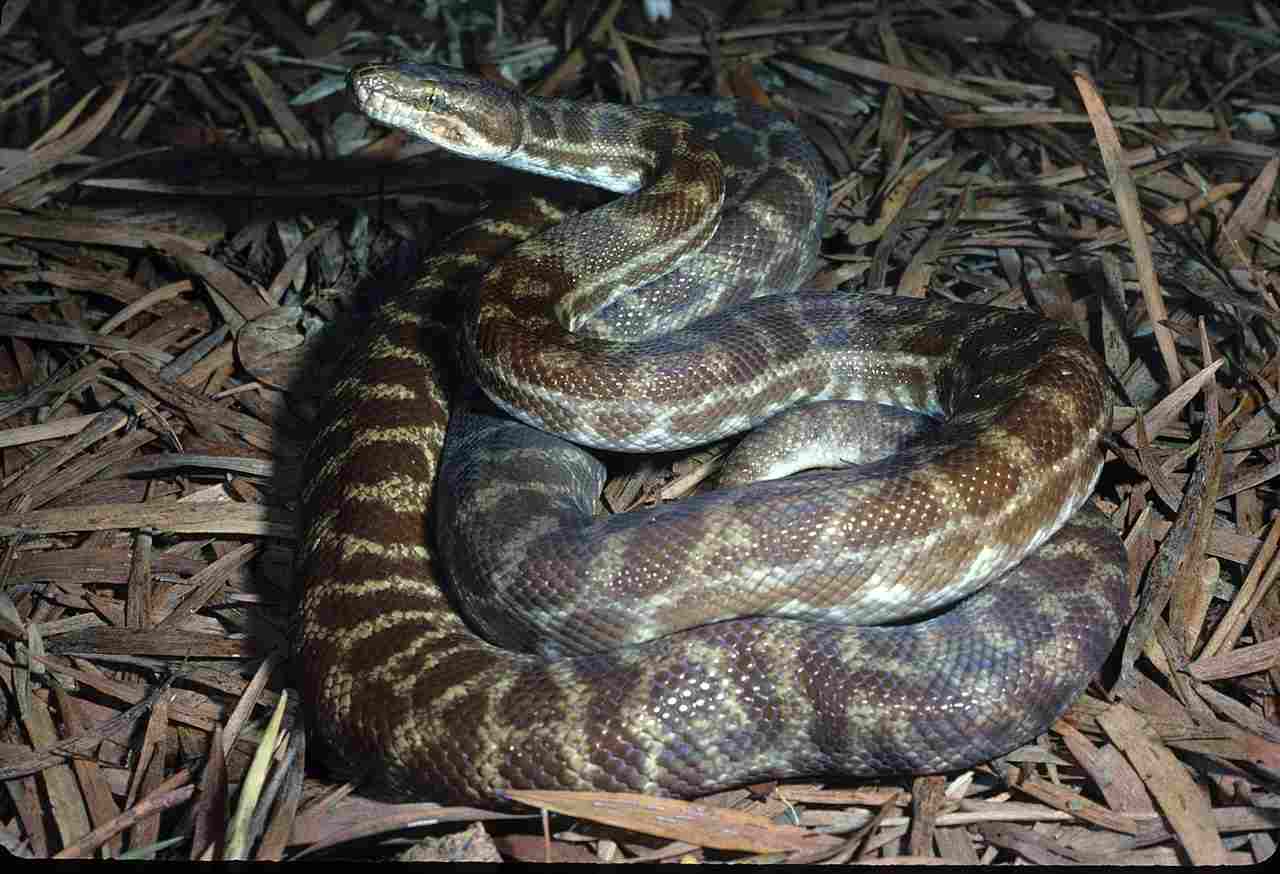
Python Snake Facts
- Pythons are reptiles found in tropical and subtropical regions.
- They belong to the family Pythonidae and include various species like the Indian python and Burmese python.
- Pythons can vary in size, with some reaching over 20 feet in length.
- Their appearance includes elongated bodies and distinctive scale patterns.
- Pythons have sharp, recurved teeth for grasping and constricting prey.
- They primarily feed on mammals, birds, reptiles, and amphibians.
- Pythons are solitary animals and often hunt at night.
- Pythons are semi-aquatic and are commonly found near water sources.
- They reproduce sexually and exhibit parental care behaviors.
- Lifespan of pythons typically ranges from 15 to 30 years.
- Pythons are listed as threatened or endangered due to habitat loss and poaching.
- While some people keep pythons as pets, they require specialized care.
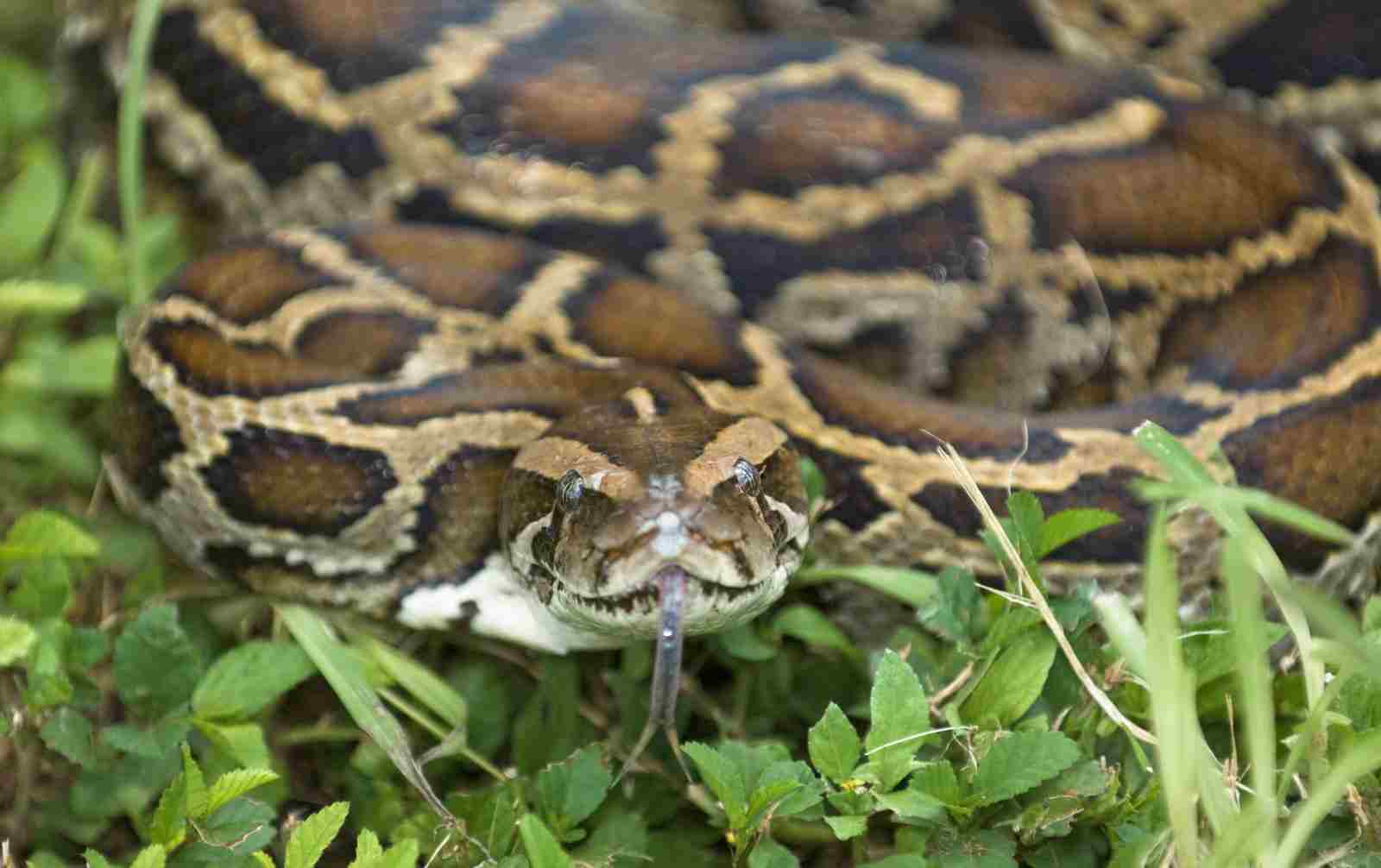
| Criteria | Summary |
| Scientific Classification |
Provides taxonomic framework for understanding python species diversity within animal kingdom
|
| Subspecies |
Highlights diversity and adaptation of pythons, contributing to genetic diversity
|
| Size and Weight |
Influences role as predator/prey, shaping food web dynamics and population control
|
| Appearance and Identification |
Unique traits aid in species ID, ecological studies, and survival through camouflage
|
| Dentition and Bite Force |
Essential for predation, impacting prey populations and ecosystem structure
|
| Diet |
Carnivorous feeding habits maintain ecological balance, shaping community dynamics
|
| Behavior |
Nocturnal, solitary behavior and hunting strategies influence interactions and ecosystem
|
| Sounds/Vocalization |
Limited vocalizations suggest reliance on other communication forms
|
| Habitat |
Wide habitat range reflects adaptability, shaping biodiversity patterns and processes
|
| Geographic Range and Distribution |
Informs conservation efforts, highlighting habitat suitability and conditions across ranges
|
| Tracks |
Tracking movements provides insights into behavior and habitat use, guiding conservation
|
| Reproduction |
Strategies impact population dynamics, genetic diversity, and ecosystem stability
|
| Lifespan |
Variations influence demographics, longevity, and ecosystem processes
|
| Major Adaptations |
Key adaptations enhance survival and ecological role, impacting prey populations
|
| Conservation Status |
Threats and measures inform protection efforts, safeguarding populations and ecosystems
|
| Domestication and Suitability as a Pet |
Assessing suitability minimizes welfare and ecological concerns, promoting responsible ownership
|
1. Scientific Classification:
Kingdom: Animalia
Phylum: Chordata
Class: Reptilia
Order: Squamata
Suborder: Serpentes
Family: Pythonidae
Genus: Python
Species: Pythonidae
Common species include:
Python regius (Ball Python)
Python molurus (Indian Python)
Python reticulatus (Reticulated Python)
Python bivittatus (Burmese Python)
Python sebae (African Rock Python)
2. Subspecies:
Details: Pythons have various subspecies adapted to different environments, such as the Burmese python (Python bivittatus), Indian python (Python molurus), and the African rock python (Python sebae).
Importance: Subspecies play a crucial role in biodiversity, contributing to genetic diversity within the python species. They also showcase the adaptability of pythons to different habitats.
Ecological Implications: The presence of different subspecies indicates diverse ecological niches within python habitats, influencing predator-prey dynamics and ecosystem health.
3. Size and Weight:
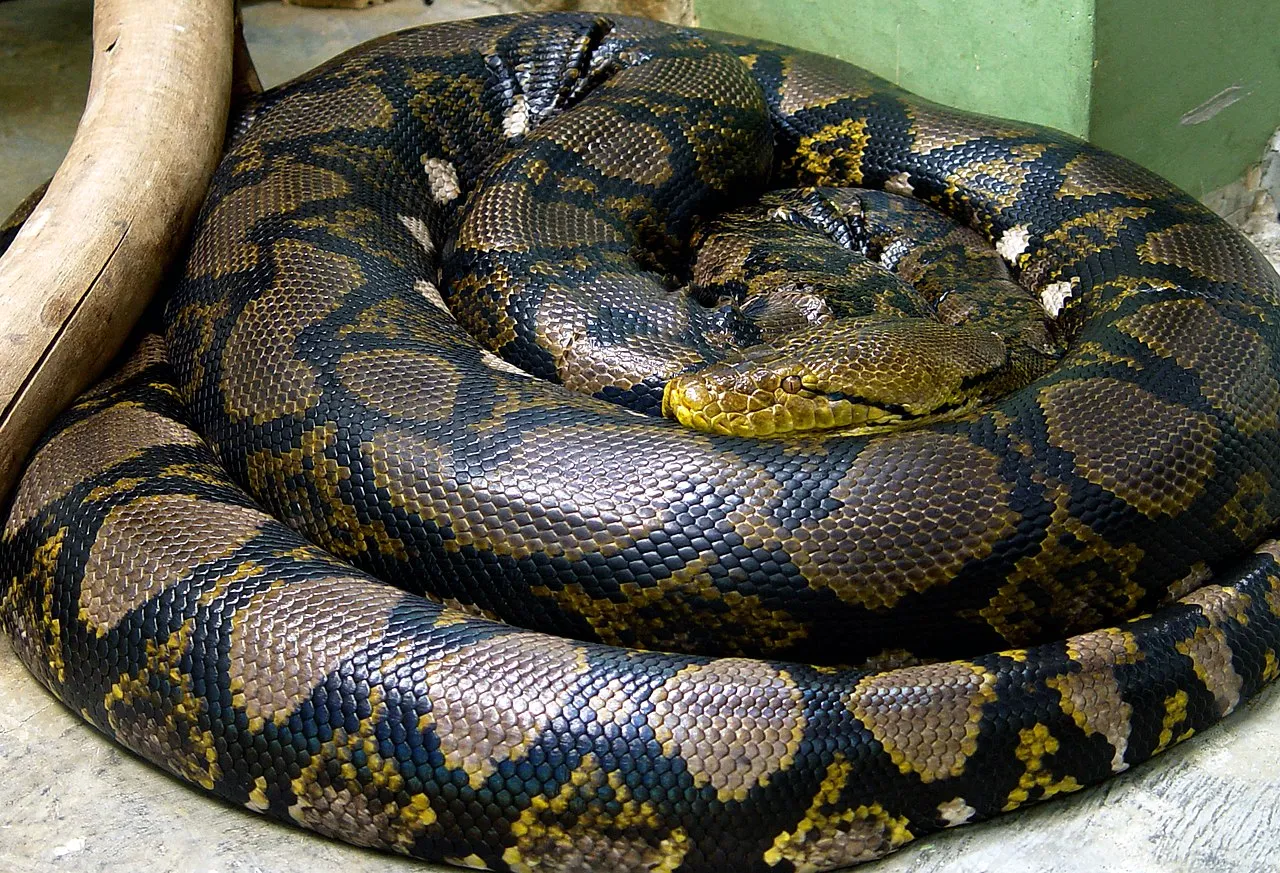
Details: Pythons exhibit considerable variation in size, with some species reaching lengths of over 20 feet (6 meters) and weights exceeding 200 pounds (90 kilograms).
Importance: Size and weight impact the python’s role in the ecosystem as both predator and prey, influencing food web dynamics and population control.
Ecological Implications: Large pythons can exert top-down pressure on prey populations, affecting species abundance and distribution within their habitats. Conversely, they can also fall prey to larger predators, contributing to energy flow and nutrient cycling in ecosystems.
4. Appearance and Identification:
Details: Pythons are characterized by their elongated bodies, lack of limbs, and distinctive scale patterns. They often exhibit cryptic coloration, blending into their surroundings.
Importance: Unique physical features aid in species identification and ecological studies, facilitating research on population dynamics and distribution.
Ecological Implications: Camouflage and coloration help pythons avoid detection by predators and improve hunting success, impacting both predator-prey interactions and community structure within ecosystems.
5. Dentition and Bite Force:
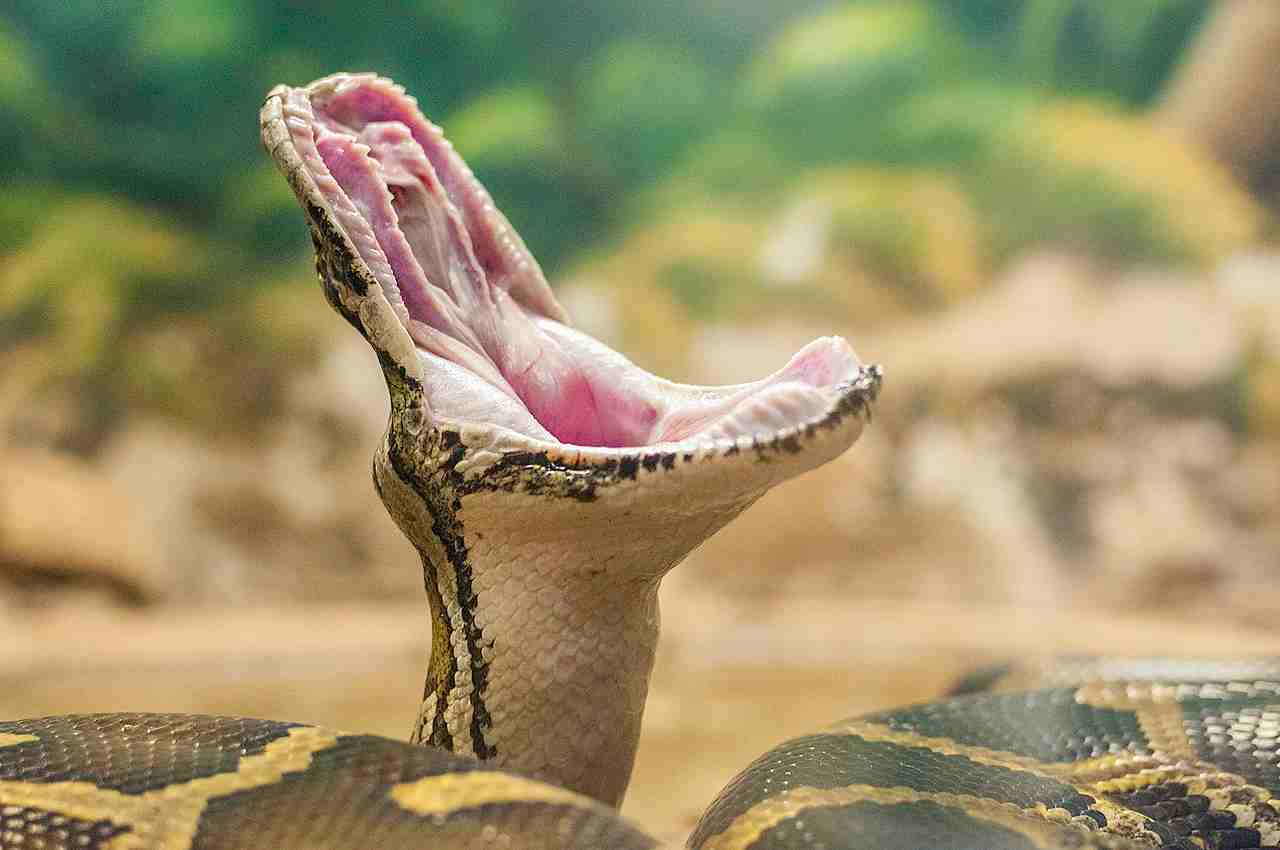
Details: Pythons possess sharp, recurved teeth designed to grasp and hold onto prey. They can exert powerful constriction forces to subdue their victims.
Importance: Dentition and bite force are essential adaptations for predation, enabling pythons to capture and immobilize prey effectively.
Ecological Implications: Python predation influences prey population dynamics and community structure, shaping the abundance and distribution of species within ecosystems. Additionally, their feeding behavior contributes to nutrient cycling and energy transfer within food webs.
6. Diet:
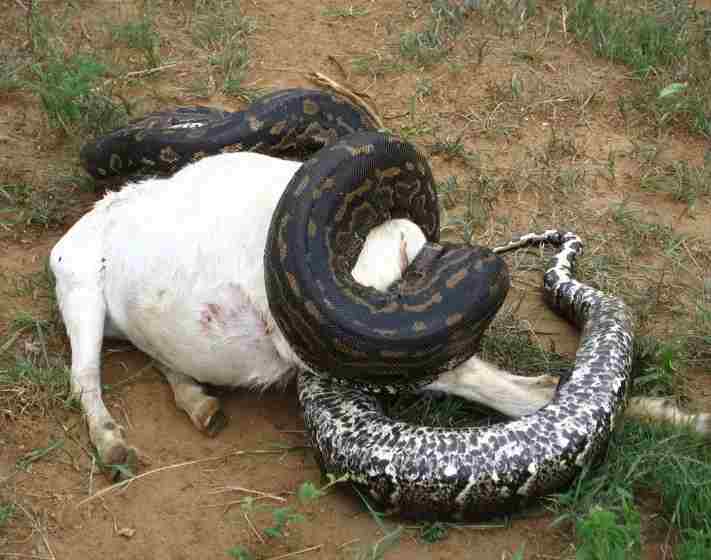
Details: Pythons are carnivorous and primarily feed on a variety of vertebrates, including mammals, birds, reptiles, and amphibians. They ambush their prey and use constriction to suffocate it before swallowing it whole.
Importance: Pythons play a crucial role in controlling prey populations, helping to maintain ecological balance within their habitats.
Ecological Implications: Python predation can influence the distribution and abundance of prey species, affecting community dynamics and ecosystem structure.
7. Behavior:
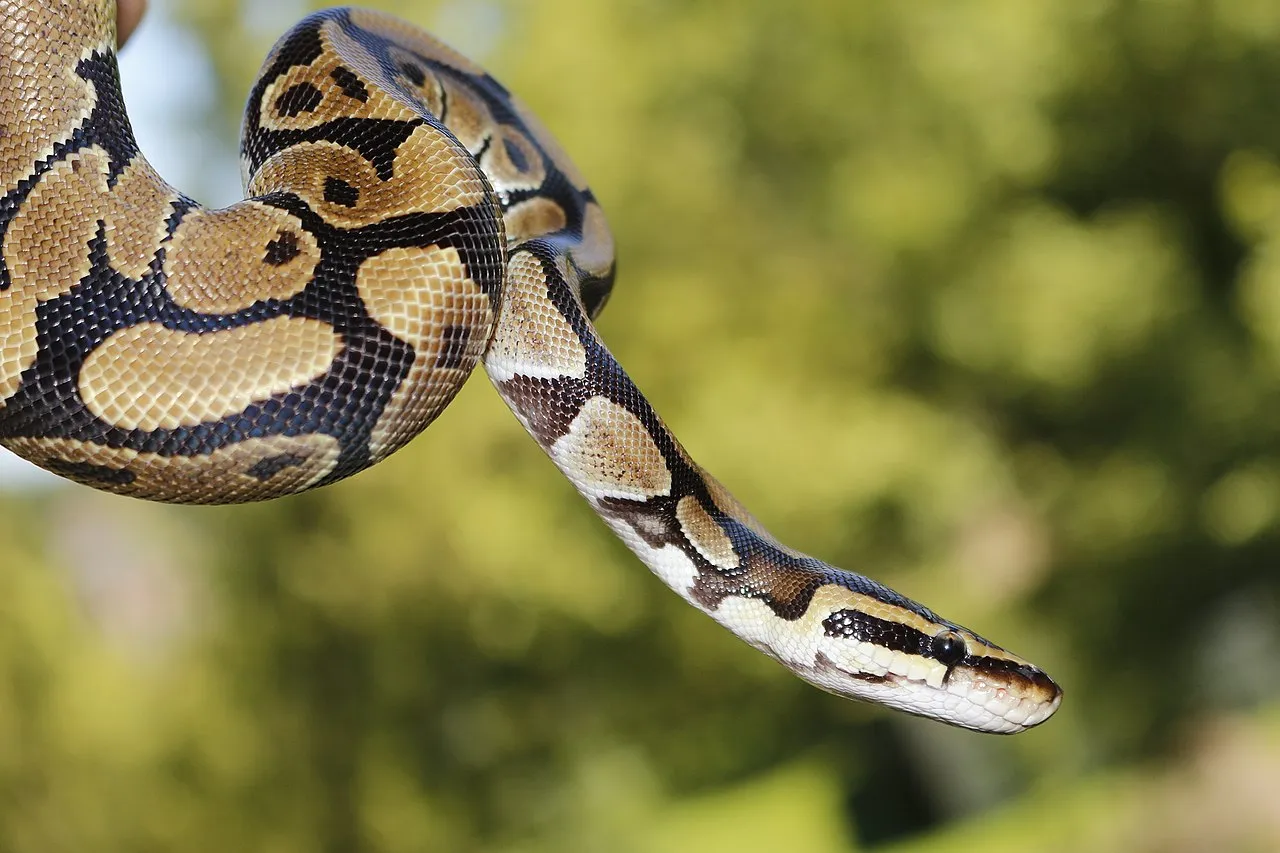
Details: Pythons are typically solitary animals, only coming together during mating season or when sharing basking sites. They are primarily nocturnal hunters, using ambush tactics to catch prey.
Importance: Understanding python behavior is essential for conservation efforts and managing potential conflicts with humans.
Ecological Implications: Python behavior influences their interactions with other species, including prey, predators, and competitors, shaping ecosystem dynamics and functioning.
8. Sounds/Vocalization:
Details: Pythons are not known for vocalizations like some other reptiles. However, they may hiss or exhale loudly when threatened.
Importance: Limited vocalizations suggest a reliance on other forms of communication and sensory perception for survival.
Ecological Implications: Lack of vocalization may impact python communication with conspecifics and other species, potentially affecting social dynamics and predator-prey interactions within ecosystems.
9. Habitat:
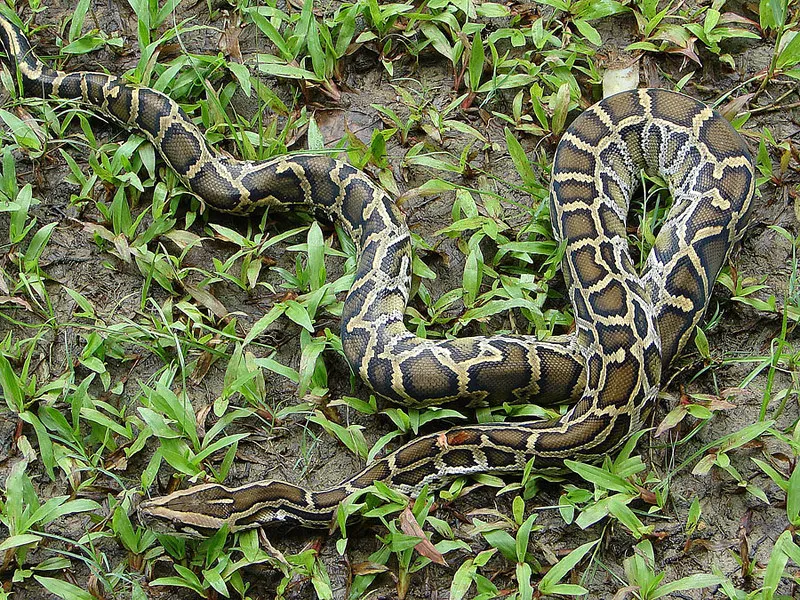
Details: Pythons inhabit a wide range of habitats, including tropical rainforests, grasslands, swamps, and even urban areas. They are semi-aquatic and often found near water sources.
Importance: Habitat preference influences python distribution and abundance, highlighting their adaptability to various environmental conditions.
Ecological Implications: Pythons are ecosystem engineers, shaping habitat structure and influencing species composition through their presence and behaviors. Their habitat requirements also make them sensitive to environmental changes and habitat degradation.
10. Geographic Range and Distribution:
Details: Pythons are found in tropical and subtropical regions of Africa, Asia, and Australia. Specific species have distinct ranges, with some being more widespread than others.
Importance: Understanding the geographic distribution of pythons is crucial for conservation planning and management efforts.
Ecological Implications: Python distribution reflects habitat suitability and environmental conditions, impacting biodiversity patterns and ecosystem functioning across their range.
11. Tracks:
Details: Python tracks typically show a series of parallel lines created by their belly scales as they move. These tracks can vary in size depending on the python’s size and weight.
Importance: Tracking python movements aids in understanding their behavior, habitat use, and distribution.
Ecological Implications: Monitoring python tracks provides insights into their ecological roles and interactions with other species, informing conservation strategies and land management practices.
12. Reproduction:

Details: Pythons reproduce sexually, with females laying eggs or giving birth to live young, depending on the species. They often exhibit parental care behaviors, such as incubating eggs or protecting hatchlings.
Importance: Reproductive strategies impact population dynamics and genetic diversity within python populations.
Ecological Implications: Python reproduction influences population size and structure, affecting prey-predator relationships and ecosystem stability. Parental care behaviors can enhance offspring survival rates and contribute to population resilience.
13. Lifespan:
Details: Lifespan varies among python species and individuals but typically ranges from 15 to 30 years in the wild, with some individuals living longer in captivity.
Importance: Understanding python lifespan provides insights into population demographics and longevity in natural and managed environments.
Ecological Implications: Lifespan affects python population dynamics, including recruitment rates, age structure, and overall population health. Longevity can also influence ecosystem processes and interactions over time.
14. Major Adaptations:

Details: Pythons possess several key adaptations for survival, including camouflaged coloration for stealthy hunting, heat-sensing pits to detect prey, and flexible jaws for swallowing large prey whole.
Importance: These adaptations enhance the python’s ability to thrive in diverse environments and fulfill its ecological role as a predator.
Ecological Implications: Major adaptations allow pythons to effectively exploit their habitats, impacting prey populations, predator-prey interactions, and ecosystem structure.
15. Conservation Status:
Details: Many python species face threats such as habitat loss, poaching for the exotic pet trade, and persecution due to conflicts with humans. Consequently, several python species are listed as threatened or endangered by organizations such as the IUCN.
Importance: Conservation status assessments inform efforts to protect and manage python populations and their habitats.
Ecological Implications: Declines in python populations can have cascading effects on ecosystems, altering predator-prey dynamics and biodiversity. Conservation measures are crucial for maintaining healthy python populations and ecosystem integrity.
16. Domestication and Suitability as a Pet:

Details: Pythons are sometimes kept as pets due to their fascinating appearance and relatively low maintenance requirements. However, they require specialized care and can pose risks to inexperienced owners.
Importance: Understanding the suitability of pythons as pets helps mitigate potential welfare issues and environmental impacts associated with the exotic pet trade.
Ecological Implications: The exotic pet trade can impact wild python populations through unsustainable harvesting and introduction of non-native species. Responsible pet ownership practices and regulations are essential for minimizing ecological and animal welfare concerns associated with keeping pythons as pets.
*Summary of Information On Python Snake
Scientific Classification:
Provides the taxonomic framework for understanding python species diversity and relationships within the animal kingdom.
Subspecies:
Highlights the diversity of pythons and their adaptation to various habitats, contributing to genetic diversity and ecosystem resilience.
Size and Weight:
Influences python’s role as a predator and prey, shaping food web dynamics and population control within ecosystems.
Appearance and Identification:
Unique physical traits aid in species identification, ecological studies, and survival through camouflage and coloration.
Dentition and Bite Force:
Essential adaptations for predation, enabling pythons to capture and immobilize prey effectively, influencing prey population dynamics and ecosystem structure.
Diet:
Carnivorous feeding habits impact prey populations, maintaining ecological balance and shaping community dynamics within habitats.
Behavior:
Solitary nocturnal behavior and hunting strategies influence interactions with prey, predators, and competitors, affecting ecosystem functioning.
Sounds/Vocalization:
Limited vocalizations suggest reliance on other forms of communication, potentially impacting social dynamics and predator-prey interactions.
Habitat:
Wide habitat range reflects adaptability to different environments, shaping biodiversity patterns and ecosystem processes.
Geographic Range and Distribution:
Geographic distribution informs conservation efforts, highlighting habitat suitability and environmental conditions across python ranges.
Tracks:
Tracking python movements provides insights into behavior, habitat use, and interactions with other species, guiding conservation strategies.
Reproduction:
Reproductive strategies impact population dynamics, genetic diversity, and ecosystem stability through parental care behaviors.
Lifespan:
Lifespan variations influence population demographics, longevity, and ecosystem processes, affecting overall population health.
Major Adaptations:
Key adaptations enhance python’s survival and ecological role as a predator, impacting prey populations and ecosystem structure.
Conservation Status:
Threats and conservation measures inform protection efforts, safeguarding python populations and ecosystem integrity.
Domestication and Suitability as a Pet:
Assessing pet suitability minimizes welfare and ecological concerns associated with exotic pet trade, promoting responsible ownership and conservation practices.
